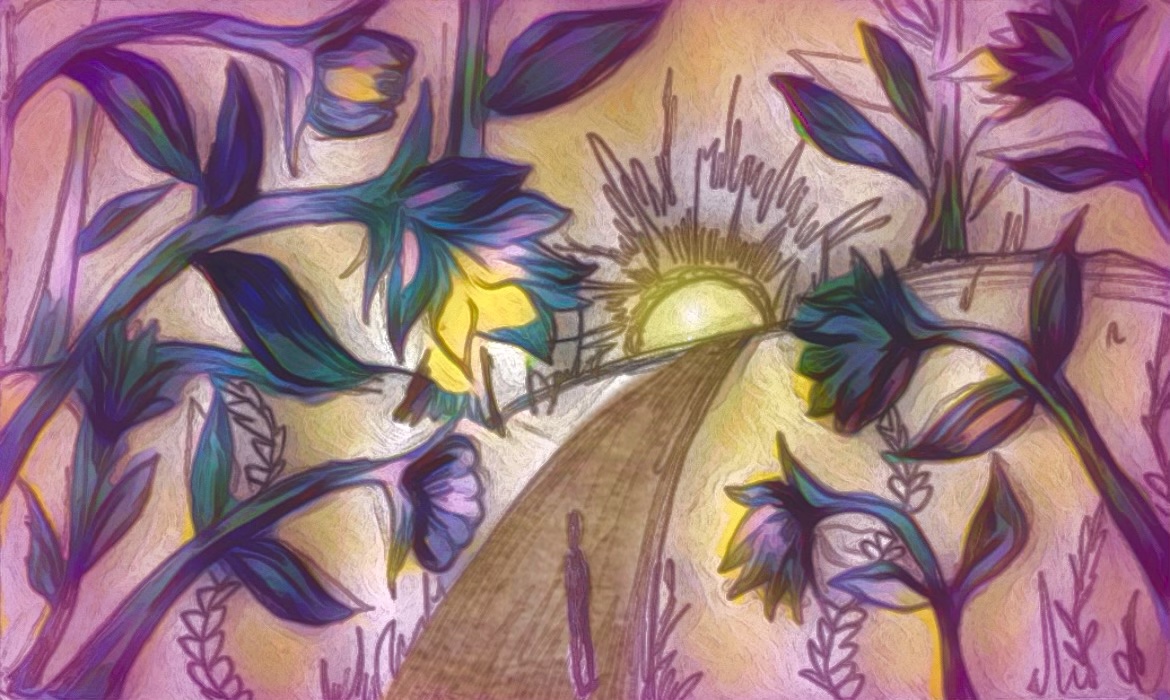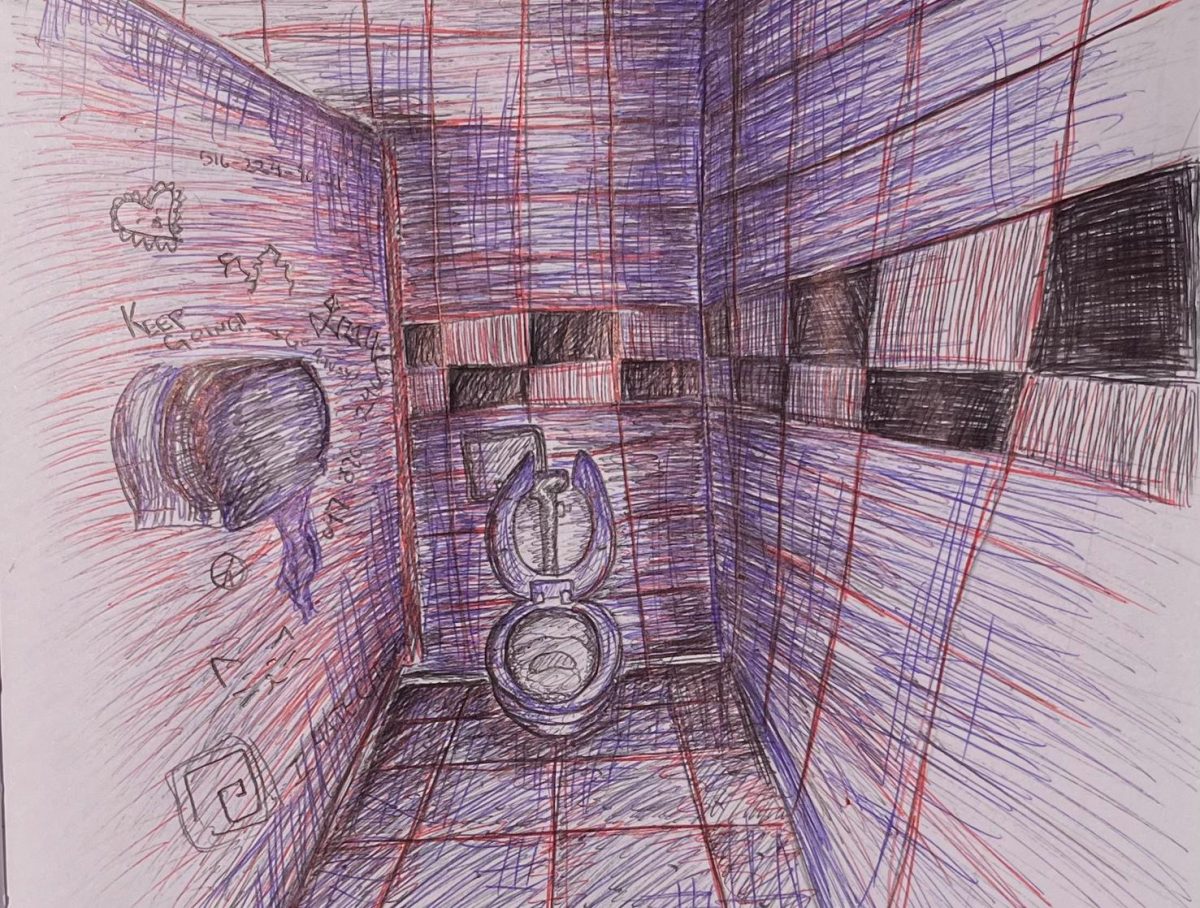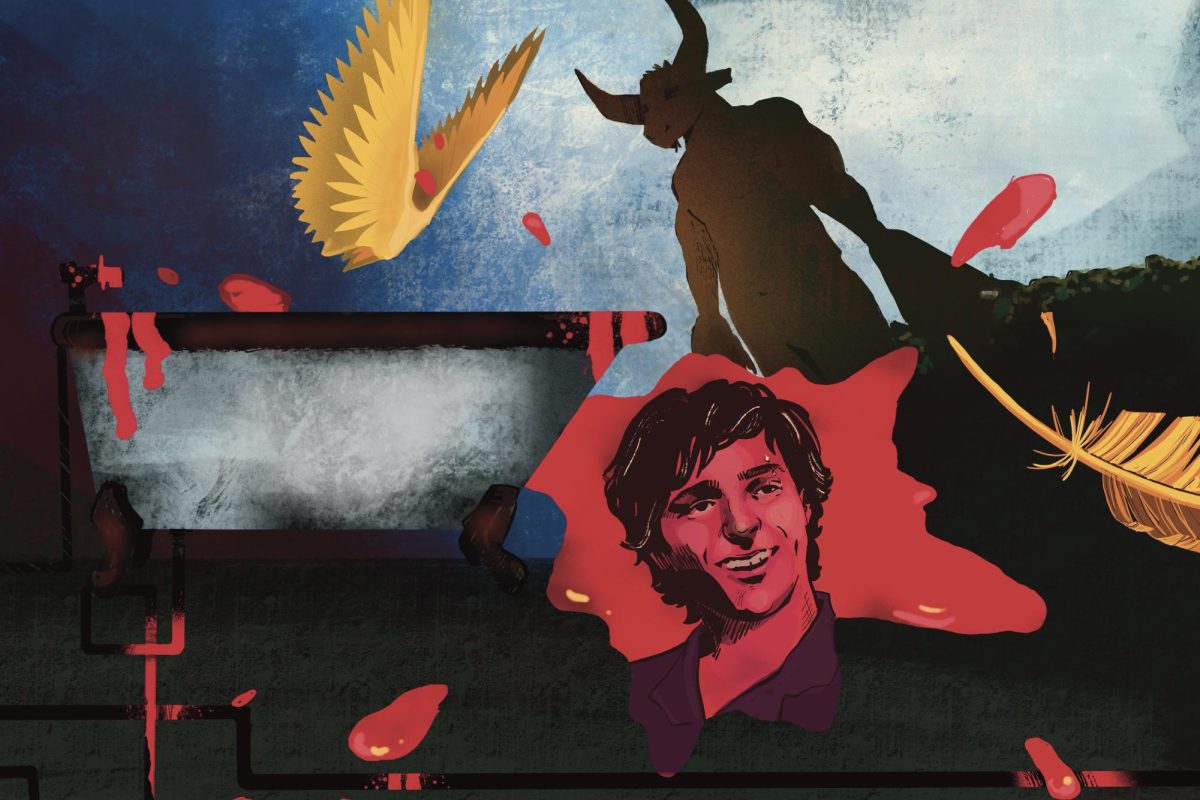Graffiti can be found in many places around the UVM campus, most notably on the walking path from Redstone to Main campus. It was on this path that I began looking for the graffiti of UVM.
As I began walking from Redstone to Main campus I was struck by the seeming lack of conspicuous graffiti. Was this path a haven for graffiti? Most of the graffiti I found, when I could find it, were simple tags lacking any real artistic effort.
Perhaps the most disturbing instance of graffiti I found was in a bathroom in Billings; it was an advertisement, made by a writer known as “The Unicorn”, for a news magazine known as the Cinder Kit.
I was heretofore unaware of any such news-magazine present at UVM, until I was informed by an enthusiastic supporter of the said news-magazine. I do not believe the word “disturbing” is inappropriate when describing the tag I found.
As a member of the printed news-media here at UVM, I can accurately call this particular instance of graffiti immoral. Any printed news source should not have to resort to illegal action to promote their organization, particularly a newly formed news-magazine.
The Case for Immorality
Although I would usually refrain from classifying any kind of art as immoral, I feel this is one example that demands special consideration.
It is the opinion of this writer that any graffiti that advertises any literary publication in the collegiate world is fundamentally immoral. Once any type of literary agent at UVM resorts to illegitimate advertisements, they cease to credibly exist (barring the inclusion of illegal acts specific to the mission statement of the organization).
The Case for More Graffiti
Since the 1970’s graffiti has become an important medium of expression for a small demographic of urban residents, particularly in areas of economic stress and decline.
It is made by artists, with few exceptions, without an accepted gallery presence. It is not considered for display in The Guggenheim, The New Museum of Contemporary Art (New York), or even Center Stage: The Living/Learning Gallery.
Because of the illegal and rebellious nature of graffiti, many curators usually refrain from exhibiting any representation of graffiti in their galleries.
Although graffiti is an art form that relies on a certain amount of illegality to legitimize its message, it also represents the cutting edge in art and culture.
A graffiti artist can at once give us a reflection of their community culture, while displaying their work in a public, non-profit setting. There is no inherent desire to sell their art; it exists to fulfill the art aesthetic.
The art seen in MOST galleries comes with accepted and institutionalized baggage. It is sterile and non-dynamic, where graffiti is passionate and constantly changing. To the artists who practice graffiti: keep writing, tagging, and exercising your art form, Burlington needs your voice.
















